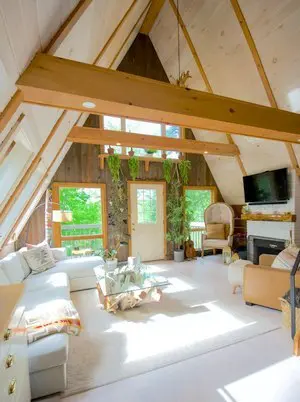12 Signs You’re Overpaying For A Home

The feeling of buying a home is wonderful. But pay too much and your pride will soon turn to regret.
Nobody wants to be paying off a sum for the next 30 years to find out the house is worth less than what you paid for it.
Make sure you look out for the following warning signs before you put your offer in:
Contents:
1. Listing is on the market for some time
There’s an old saying that still rings true to this day:
“ If it’s not good enough for someone else then why is it good enough for you? ”
This is the most powerful indicator – and it’s one that people find difficult to argue with. In fact, you don’t need even need to know the underlying reason for why the home isn’t selling – the fact that it is still on the market is a bad sign in itself.
Of course stopping at this carries its own risk. There may be legitimate reasons why a home is not appealing to other buyers but is appealing to you.
For example, a home on a busy street may not be liked by families with kids who need somewhere quiet, but might be ideal for a person who values being close to transport links and amenities. The neighbourhood might be known for family homes and there just isn’t a large amount of interest from young professionals.
Another benefit of seeing homes that aren’t selling is that sellers are more willing to negotiate due to their increased desperation. This is an area of the property market where significant bargains can be found if there are no major issues. So don’t be turned away if you see a home that hasn’t sold yet!
Even though a property may be perfectly adequate for living in, you as a buyer do not want to pay over the odds for something that the seller is struggling to offload. Make sure your asking price reflects the length of time the home has been up for sale.
It’s impossible to give exact guidelines, as some homes may naturally take longer to sell (think of the £10m+ homes in Central London). For regular homes in a ‘normal’ market 3 months would be a more standard timeframe. 6 months would raise some eyebrows. Any longer than a year indicates a real lack of demand. Agents know that buyers think these things and will take listings down before they get stale, putting the listing back up when demand comes back.
2. Home is empty


A lived in home can make all the difference
This mainly applies for homes that are currently being rented that you want to purchase.
An ideal scenario for a buy-to-let landlord is to have a buyer lined up to purchase their investment property straight after their tenants leave. That way the landlord can benefit from rental income from the tenants while the sale is being worked through and evict the tenants when the property is ready to be sold.
No landlord wants their rental property empty before they sell it – especially in recent years given that in many local authorities council tax increases if a property is not rented. The only time a landlord would want to have a property empty before sale is if they were doing renovation works to it in order to fetch a higher price (although the typical buy to let landlord has no interest taking the risk of spending money on a tired property when they may not fetch a higher price).
So because a landlord wants to keep a property rented before it is sold, if you are doing a viewing and find a property that is already empty – that gives you a big clue.
Usually it can mean that the property has been on the market for so long that the tenants have finished their tenancy and have moved out.
It can also mean that so many viewings have happened that tenants have become fed up of letting so many strangers into their home and have gone.
There is also the chance that the landlord only put the property on the market when the tenants gave their notice (sometimes notice can be as short as a month) and there hasn’t been enough time to drum up enough interest to buyers.
3. OIRO tag is lower than your offer
We previously discussed why OIRO could be a great hint on how desperate the seller might be to get rid of their property.
If a property is listed as OIRO the price tag is already at the higher end of the market. In this instance you should be targeting your offer on the lower end of this price range, or putting in an offer lower than the OIRO price.
4. Bad neighbourhood
Always research the neighbourhood when viewing homes – online and in person. A neighbourhood that declines will drag home prices down with it, and it can be a gamble trying to find an ‘up and coming’ area to live in with the hope of improvement over time.
Is the home near a nice high street with attractive amenities (restaurants, coffee shops, bars) or do the commercial units look tired and dated?
Are there parks and open spaces nearby for relaxation? Do they feel welcoming to walk around in or are they the kind of places you wouldn’t want to hang around when it gets dark?
Are there signs of crime in the area (smashed windows, graffiti, bicycles without wheels)? What do the local stats say about crime?

5. Similar homes nearby are for sale
The housing market is very finely balanced. In the UK there is a net shortage of homes – meaning every year as the population grows homes become ever more scarce (a main reason why house prices have risen over a 20+ year period).
If you have noticed a large amount of very similar homes nearby that have are struggling to sell – consider your options. Sellers can be reluctant to accept offers lower than their asking price. But if they sense competition with others they’re more likely to change their mind.
If there are 2 or more homes that you like the look of, try making a lower offer across all of them to see if any seller bites. It could save you a lot.
6. Your valuation is a record high [Technical point]
It is essential to do your homework on what prices homes are selling for in your area. There are many ways of doing this. The most basic is to find the sold prices section on the Rightmove or Zoopla.
Be aware that if you’re looking at data showing the prices sold – there is a time lag between when people make an offer, complete a sale and this data then being published on land registry. For example if you are looking in June you might only be seeing data for March depending on the time lag. It’s important to note that prices can go up or down in the meantime.
Some have found it useful looking at the prices the homes were listed for when the advert went to ‘under offer’. This gives a useful idea of the maximum price the seller was looking for at the time the offer is made (most homes don’t sell for above the asking price unless it is competitive).
In the UK we have seen a rising real estate market for most of the last 20 years. It can be easy to think prices will continue to rise – but the reality is no one can know for sure.
Look up how much prices are rising in your local area. Try to find some recent news reports that mention figures (for some reason house prices are always a popular news item).
Another way of looking at the most recent data is to read the latest house price index report.
7. You’re paying more for less space [Technical point]
We previously mentioned looking at how house prices are performing (and finding out if they are falling instead of rising!)
It’s also important to do your homework on how much you are paying for the size of the property.
This is really important because the house price numbers reported in news articles are a more general figure (some say things as broad as “house prices are up 10% this year”).
We know that every type of home is different. It’s no secret that during COVID the homes selling for the biggest premium were those that had a garden. Meanwhile flats in city centres struggled to sell for a similar reason.

But beneath this general detail it’s important to understand if you are overpaying given how much space you will receive.
The easiest way to do a quick comparison on this is to look at any recent homes that have sold on Zoopla and Rightmove and locate the floorplan.
Note: Floorplans are not always accurate, but they normally provide a rough indication of the size of the flat. So although this method should not be relied on individually, it can help build a complete picture.
Once you have the total area of the flat (either in square metres or square feet) divide the purchase price by the area. This gives a number that reflects the price in relation to the area.
Susan is close to making an offer on a flat that she viewed earlier in the week – Flat B.
Flat B has a total area of 500 square feet. The asking price is £350,000. This makes a rough calculation of £700 per square foot.
A similar flat in the area (Flat A) sold for £360,000 and with the sale happening 6 months ago. On this basis Susan sees this flat as a bargain as she heard flats had increased in price this year.
However on a closer inspection she sees that Flat A had a total area of 630 square feet, much bigger than Flat B.
Putting this into the calculation (divide £360,000 by 630), Flat A has a price of £571 per square foot. This means that although Flat B has a lower price to pay (£350,000) the smaller space in the flat means Susan would actually be getting less for her money and she would have to pay more money per square foot of space.
If Susan relied only on the price of the flat without looking at the area, she would not have seen the higher price she is paying when taking into account the different sizes of the properties.
8. Problems from the survey
Any major issues coming back from a survey report should be taken seriously by you. If the surveyor highlights items that need repairing soon, consider when you would have to do these repairs.
For example – a house requiring a new roof may come with a costly repair bill that you would struggle to defer.
Factor these repairs in when deciding to make an offer. Any serious buyer will be looking at the same dilemma and incorporating repair bills into their asking prices.
9. Short lease [flats]
The issue of leases is mainly focused on flats (although some homes have been sold leasehold in the UK before the practice was banned).
A short lease will cause you significant problems in the future when trying to sell your home. This is mainly because lenders will refuse to provide mortgages on short leases – and if your home can’t be purchased by someone with a mortgage you are limited to selling your home to cash buyers (who are a small part of the buying community).
Read our leaseholds guide for more info on the common problems buyers fall into.
10. New build premium
When you compare similar new build properties with existing homes on the same road, new builds are normally more expensive. Developers have been paying for material and workers at today’s prices and are looking to make a healthy profit off the sale.
Recent research indicates that the extra premium being paid on a new build home is a staggering 27%! Considering the average house price of £240,000 this means a new build costs £65,000 more.
Some people have found it difficult to sell a new build home at their original price within the first few years of owning it. After the first owner has lived inside, the property becomes ‘second hand’ and loses the new build premium price that the first owner paid.
Ask yourself the question from the point of view of the second buyer – why would you pay a 27% premium on a lived in flat compared to other ones?
New build homes are often sold by large, savvy developers who have their own sales team and professional looking ‘marketing suites’. This can sometimes put buyers off trying to negotiate a good price. Don’t be afraid to make a controversial offer. If they are getting close to end of their financial year they may concede with you.
11. Cash buyers only
We always caution buying a home solely with cash (it’s quite rare compared to the size of the mortgage market – but it does happen).
Sellers usually market a home as ‘cash only’ as a regular purchase with a mortgage would not go through. Some aspect of the sale would flag alarm bells with a lender.
There are a whole host of potential reasons why a lender might not be comfortable with a property. To name a few: short leases, survey issues or an undesirable area.
Another big reason might be that the seller is asking for too high a price. Lenders typically get a surveyor to conduct a valuation of a property before any decision is taken on providing a mortgage.

Cash only properties may have more issues that require repair works in the future – which is why it can be easy to overpay for one.
12. High ongoing fees
If you are buying a leasehold property, make sure to check the other fees that will be due each year for living there.
Service charges and ground rents can become very costly over time (many start at a manageable level and increase at a set rate with no end date).
What can seem reasonable charges when you purchase the property can climb to a high amount in 5 – 10 years. At this point these fees may be so high that other buyers (and their lenders) are put off by them. You may be forced to sell at a lower price to get any interest in the property.
If you or your solicitor foresee fees becoming higher over time in the property – it may justify dropping your asking price to compensate for this.

Pingback: 17 Reasons Why You Should Do a Second House Viewing -